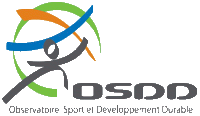First Eco Football Stadium
August 14, 2006 07:56 AM - Bonnie Alter, London
The UK’s first sustainable football stadium is almost finished, built for Dartford Football Club in Kent. With ongoing drought conditions and a desperate need for high quality grass on the field, the architect, Urban Edge Studio, has created two lakes nearby to store rainwater for watering the grass. The average football field needs a staggering 20,000 litres of water a day to keep it looking good. The rainwater will be collected from the large flat open areas such as the plaza, artificial turf community pitch, the stadium and clubhouse roofs, and piped directly to the ponds. In an average year the ground staff should not need to take any water from the main supply to water the pitch. In a complete drought the ponds will be able to supply water for almost two months without being topped up. The lakes will make the stadium self-sufficient, look pretty, and attract local wildlife.
Because of the small size of the stadium, the architects could use sustainable building materials. The gently curving roof structure incorporates renewable, laminated timber beams, exposed timber decking and a green sedum roof cover so that it appears to merge with the surrounding landscape. Solar panels on the clubhouse roof and extensive insulation add to the overall energy efficiency. The base of the clubhouse is built in flint and brick and the upper level is clad in Siberian Larch supplied from a sustainable source. The Larch will be left untreated allowing the colour to fade and soften with age. The team is known as the “Darts” and their colours are red and white. As an added touch, white flowering cherry trees have been planted to reflect this as has a plant with the name Spirea “Darts Red”. : : Urban Edge Studio Via : : Evening Standard















 |
PIWIK
|
|
PIWIK
|

